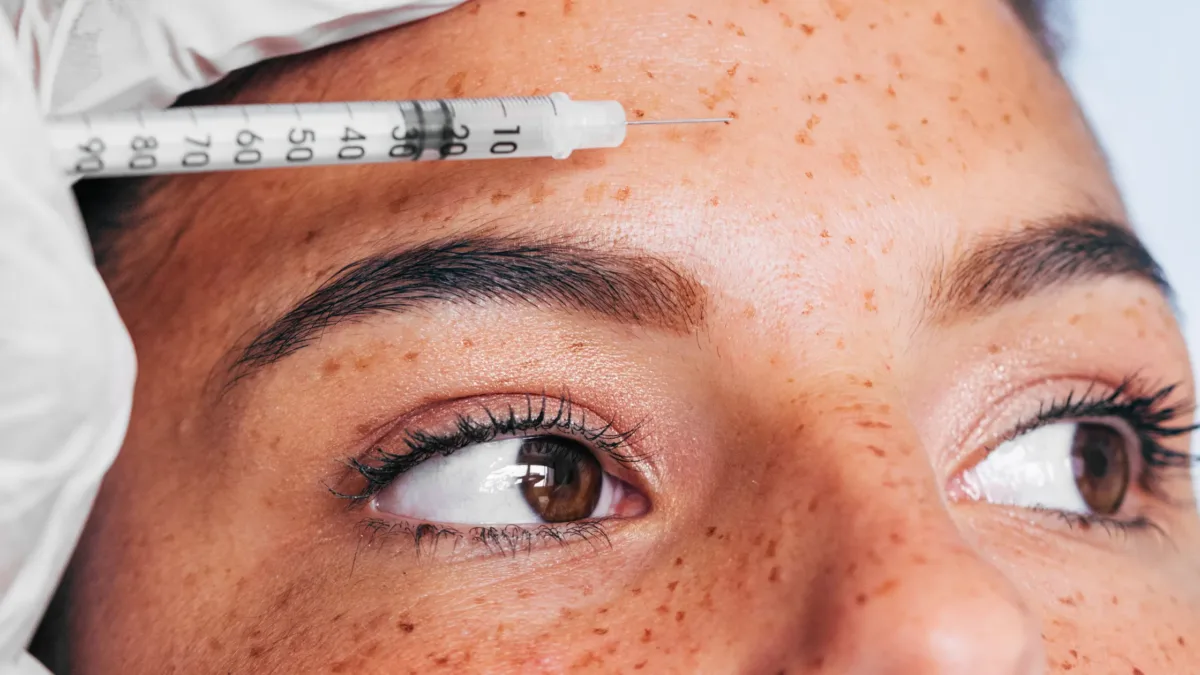Let’s Talk About Acne…
Acne can be tough on teenagers, but people can also experience adult acne at a more mature age. As we grow older our bodies go through many changes, including changes to our voice, height, menstrual cycle, behavior and yes… even changes to our skin. As we age, some people see an overproduction of oil (or Sebum) in their bodies. With the increase of sebum, the hair follicles become clogged with dead skin cells. These clogged follicles become infected or inflamed and the result is acne.
“Acne Vulgaris is the formation of comedones, papules, pustules, nodules, and/or cysts often as a result of obstruction and inflammation of pilosebaceous units (hair follicles and their accompanying sebaceous gland). Acne develops on the face and upper trunk. It is most common in adolescents.” – Jonette E. Keri , MD, PhD, University of Miami, Miller School of Medicine.
Acne can be tough to treat on your own. Most people don’t understand the difference between the stages of acne, and try to remove Pustules or nodules by extracting an infected follicle on their own at home – this can cause it to spread the bacteria deeper, resulting in infection or potential scar tissue, hyper-pigmentation, and/or hypo-pigmentation. It can be very hard for someone who is going through acne or acne complications to understand what should be extracted by a licensed Aesthetician (or in acne stages 3-4, a Medical Doctor) or left alone completely.
A licensed Aesthetician can educate an acne client, with stage 1 or 2 acne, as to how they should take care of their skin and can go into greater detail about the causes of acne flare ups, treatments and home care that they can do to minimize their acne.
A Physician can prescribe medications to treat stages 3 and 4 of acne. Curious about the 4 stages of acne? Let’s discuss the differences:
Grade/Stage 1 Acne: Mild acne; consisting of tiny or dark bumps of open comedones (blackheads), and a few closed comedones. They tend to be minimal and are not always present.
Treatments: Mild acne can be treated with a good skin regimen, OTC (over the counter) products with ingredients containing benzoyl peroxide, salicylic acid, and azelaic acid (among others) that a Licensed Aesthetician can recommend. Regular facials are important and a facial regimen can be incorporated alongside your products at home.
Grade/Stage 2 Acne: Moderate acne; more open comedones, closed comedones ( also known as whiteheads – a yellowish/white substance comes out when extracted). Aside from open and closed comedones, there is often minimal presence of papule and pustules. Papules, also known as pimples, are an inflamed reddish bump that feels hard and excretes no fluid when squeezed, but may develop pus. Pustules have a yellowish/white center, referred to as the head of the pimple or “whitehead”, and excrete pus when they are squeezed.
Treatments: Moderate acne can be treated with the same approach as Grade 1 acne. IF Grade 2 acne worsens in 1-2 months it is best to approach it as Grade 3-4 acne and talk to a medical doctor.
Grade/Stage 3 Acne: Moderately severe acne; red, inflamed, papules and pustules will be present, and inflamed nodules are possible. Papules and pustules can merge with each other. Never squeeze or break a pimple, as this will spread the infection and worsen the acne. Grade 3 acne can lead to skin damage and scarring (even without touching it) – this is known as PIH or Post Inflammatory Hyperpigmentation. This typically indicates that the infection is deep within the skin and that is why there tends to be more redness and swelling in the affected areas.
Treatments: Unlike Grade 1 and 2 acne, moderately severe acne can’t be treated with OTC products. At this level it is best to be seen by a Medical Doctor. A Medical Doctor will prescribe oral antibiotics such as doxycycline, clindamycin and tetracycline or topical antibiotics for about 1-3 months. The exact amount of time depends on how much bacteria is present as the antibiotics will be used to control the infection. Products such as benzoyl peroxide are still necessary to control oil production.
Grade/Stage 4 Acne: Severe acne; cysts, papules, pustules and nodules are present. At this stage acne is painful to the touch. Craters, scar formation from tissue damage, are very common to occur. This type of acne is found on the face, neck, décolleté, shoulders and even on the back. Grade 4 acne can be very stressful, which can actually worsen the acne. The best way to deal with the stress is accepting the fact that there is acne present, and deciding to get treatment help. At this stage of acne it is highly recommended to consult a medical physician. Grade 4 acne can’t be treated with products that we would use on grades 1-2. Sebaceous Cysts form underneath the layer of skin and it can not be easily removed. It is best to leave all cysts alone. Popped cysts can lead to scaring and further spreading the infection. It is important to acknowledge and treat this stage of acne.
Treatments: The Grade 4 Cystic acne can be treated with an intralesional steroid injection, and a topical isotretinoin by an MD. At this point soothing cleansers and moisturizers are highly recommended for a patient using topical isotretinoin and to help calm any lingering skin inflammation.

Authored by: Joanna Garcia, LE


